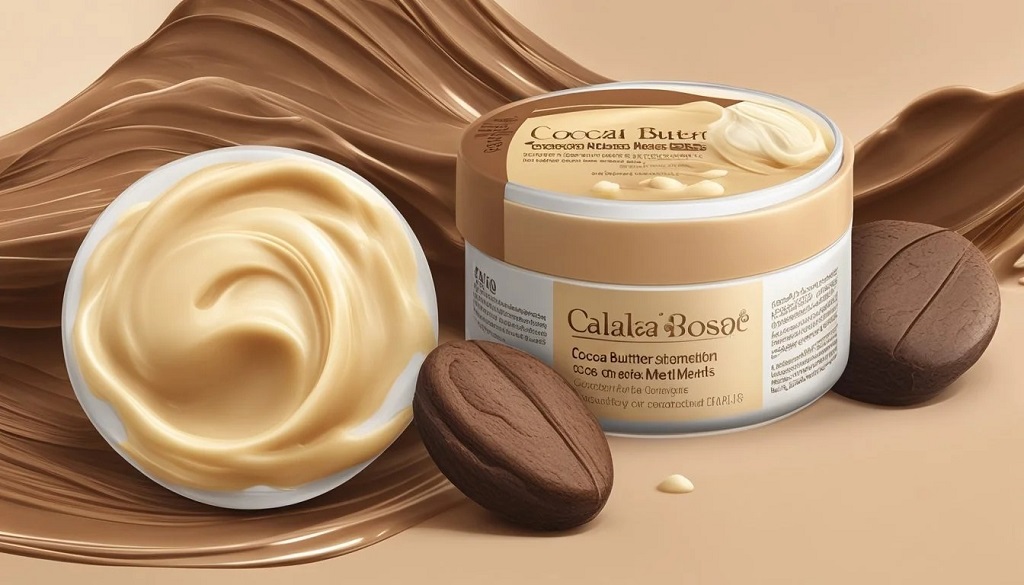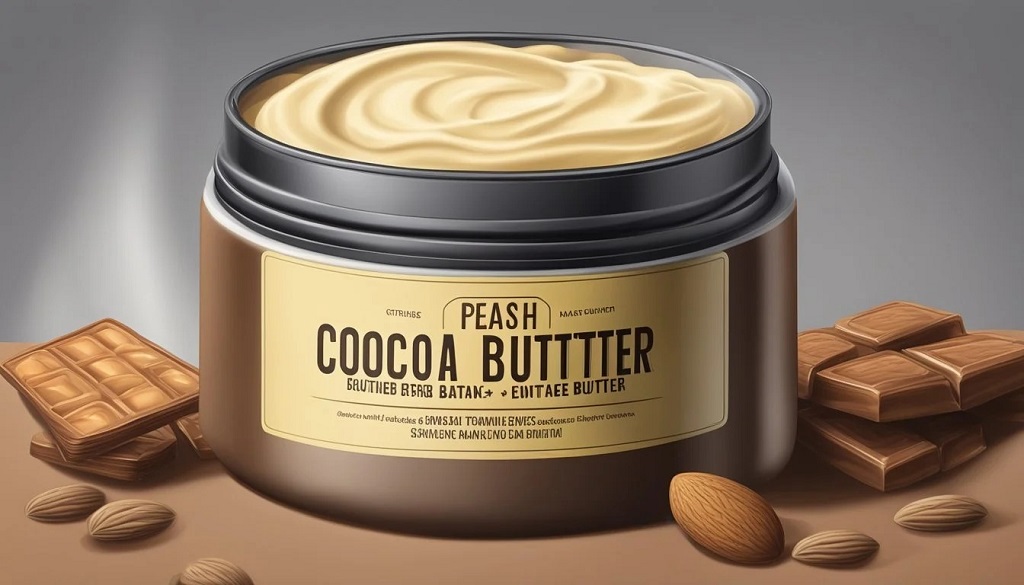
Cocoa butter is a natural fat extracted from cocoa beans. It is widely used in skincare, cosmetics, and even in food products like chocolate. While many people think natural oils and butters last forever, cocoa butter does have a limited shelf life. Its stability is higher than many plant-based oils, but it can still turn bad if not stored properly. Understanding how long cocoa butter lasts, what shortens its lifespan, and how to recognize spoilage can help you get the most out of this versatile ingredient. In this guide, we’ll answer the most common questions about cocoa butter’s shelf life, proper storage, and the warning signs that tell you it’s time to throw it away.
How Long Does Cocoa Butter Last?
Cocoa butter typically lasts between 2 to 5 years depending on processing and storage conditions.
Unrefined cocoa butter, which retains its natural aroma and nutrients, usually stays fresh for about 2–3 years. Refined cocoa butter, which has been filtered and deodorized, can last closer to 4–5 years. This longevity comes from cocoa butter’s high stability and natural antioxidants that slow down oxidation compared to other oils like coconut or olive oil.
- Unrefined cocoa butter: 2–3 years
- Refined cocoa butter: 3–5 years
- Homemade blends (with added oils): 6–12 months
If you buy cocoa butter for skincare, always check the supplier’s label. Some may include a “best by” date, which is a helpful reference, though not always an absolute expiration.
What Factors Affect the Shelf Life of Cocoa Butter?
Heat, light, air, and contamination are the main factors that shorten cocoa butter’s shelf life.
Even though cocoa butter is stable, poor storage can make it spoil faster. Here are the key factors:
- Heat: Exposure to high temperatures speeds up oxidation. Keeping cocoa butter in a warm environment can cause it to melt and solidify repeatedly, weakening its structure.
- Light: Direct sunlight or bright artificial light breaks down natural antioxidants, leading to faster spoilage.
- Air: Oxygen exposure promotes rancidity. An unsealed jar will not last as long as an airtight container.
- Moisture and contamination: Introducing water or bacteria (from dirty hands or spoons) creates an environment where mold or bacteria can grow.
For best results, store cocoa butter in a cool, dark, and dry place, preferably in airtight packaging.
How Can You Tell If Cocoa Butter Has Gone Bad?
The main signs of spoiled cocoa butter are a sour or sharp smell, discoloration, and a change in texture.
Good cocoa butter has a pleasant, chocolate-like aroma and a creamy yellow tone. When it starts to expire, you may notice:
- Smell: Rancid cocoa butter smells sour, sharp, or like old cooking oil instead of sweet chocolate.
- Color: Fresh cocoa butter is pale yellow. Spoiled butter may develop darker patches or a grayish tone.
- Texture: Normal cocoa butter feels smooth. Bad cocoa butter may turn grainy, crumbly, or overly sticky.
- Performance: Expired butter won’t melt evenly and may not absorb into the skin properly.
If you detect any of these signs, it’s best to discard the cocoa butter rather than risk irritation or ineffective use.
Does Cocoa Butter Go Moldy?
Pure cocoa butter rarely grows mold, but contamination can cause it.
Because cocoa butter is almost entirely fat, mold doesn’t typically grow on it. However, if water or other ingredients are introduced, mold can appear. This is common in homemade skincare recipes that mix cocoa butter with oils or butters that have shorter shelf lives. If you see fuzzy spots or unusual growths, do not use it.
What’s the Best Way to Store Cocoa Butter?

Quick Answer: Keep cocoa butter in a cool, dark, airtight container.
Proper storage can extend cocoa butter’s life significantly. Here are some tips:
- Store in a sealed glass jar or metal tin.
- Keep away from direct sunlight and humidity.
- Store at temperatures between 60°F–75°F (15°C–24°C).
- For long-term storage, you can refrigerate cocoa butter, but allow it to return to room temperature before use.
By following these steps, you’ll keep cocoa butter fresh for years.
Can You Still Use Expired Cocoa Butter?
Expired cocoa butter isn’t harmful in most cases, but it loses effectiveness and may cause skin irritation.
If cocoa butter smells slightly different but hasn’t developed a foul odor, it might still be safe for non-sensitive uses, like lubricating wooden furniture or polishing leather. However, using expired butter on your skin may clog pores or cause irritation. For food use, never consume cocoa butter that smells or looks spoiled.
How to Make Cocoa Butter Last Longer?
Keep it sealed, away from light and heat, and avoid introducing water.
To maximize shelf life:
- Buy smaller quantities to use within 1–2 years.
- Transfer large blocks into airtight containers after opening.
- Use clean, dry utensils to scoop out portions.
- Consider storing in the refrigerator if you live in a hot, humid climate.
These practices reduce the risk of spoilage and keep cocoa butter fresh.
Comparison: Cocoa Butter vs. Other Natural Butters
| Type | Average Shelf Life | Main Risk of Spoilage |
|---|---|---|
| Cocoa Butter | 2–5 years | Oxidation, heat exposure |
| Shea Butter | 1–2 years | Rancidity, mold (if contaminated) |
| Mango Butter | 1 year | Softens and spoils quickly |
| Coconut Oil | 1–2 years | Becomes rancid with heat or light |
Conclusion
Cocoa butter is one of the most stable natural butters you can use. With a shelf life of 2–5 years, it outlasts many other oils and butters. However, it is not immune to spoilage. Heat, light, air, and contamination can all shorten its lifespan. The best way to keep cocoa butter fresh is to store it in a sealed container, away from direct sunlight and moisture. Always check for changes in smell, texture, or color before using it. By taking a few precautions, you can enjoy the benefits of cocoa butter for years without waste. If you’re not sure whether yours is still good, it’s safer to replace it than risk irritation or disappointment.
Call to Action: If you’re using cocoa butter in your skincare or homemade recipes, consider buying high-quality, organic cocoa butter in small batches. This ensures freshness and better results every time.
Read More Also: Roasted Brussels Sprouts Salad Recipe
Frequently Asked Questions (FAQs)
Does cocoa butter ever really expire?
Yes. While it has a longer life than most butters, it eventually turns rancid or loses its beneficial properties within 2–5 years.
Can I freeze cocoa butter to make it last longer?
Yes, freezing can extend shelf life. Just store it in a sealed container to prevent freezer burn or moisture exposure.
Why does my cocoa butter smell strange?
If it smells sour, sharp, or unlike chocolate, it has likely oxidized and gone bad. Always trust your nose as the first indicator.
Is expired cocoa butter dangerous?
It’s not usually toxic, but it won’t work effectively and may cause skin irritation. For food, never consume expired cocoa butter.
How should I store cocoa butter if I live in a hot climate?
Keep it in the fridge or a cool, dark cabinet. Allow it to come back to room temperature before using.
Does mixing cocoa butter with other oils reduce its shelf life?
Yes. When blended with oils that expire faster (like almond or grapeseed oil), the mixture takes on the shorter lifespan.
What’s the difference between refined and unrefined cocoa butter in terms of shelf life?
Refined cocoa butter lasts longer (up to 5 years) because impurities are removed. Unrefined butter has more nutrients but usually lasts 2–3 years.




